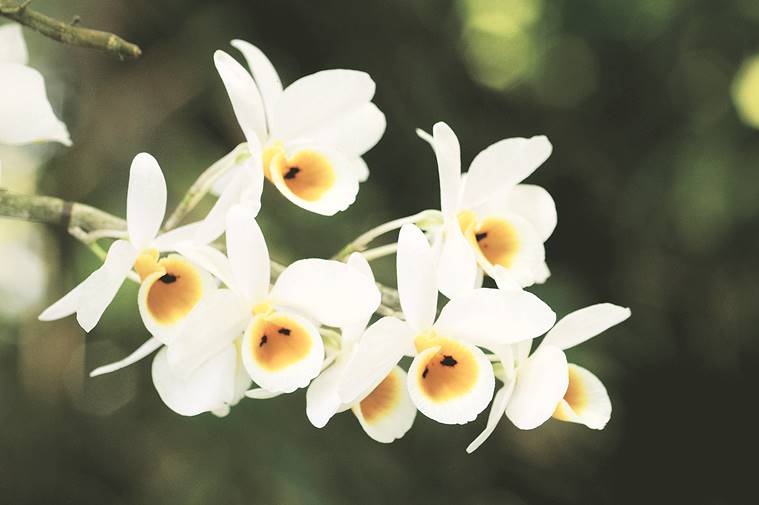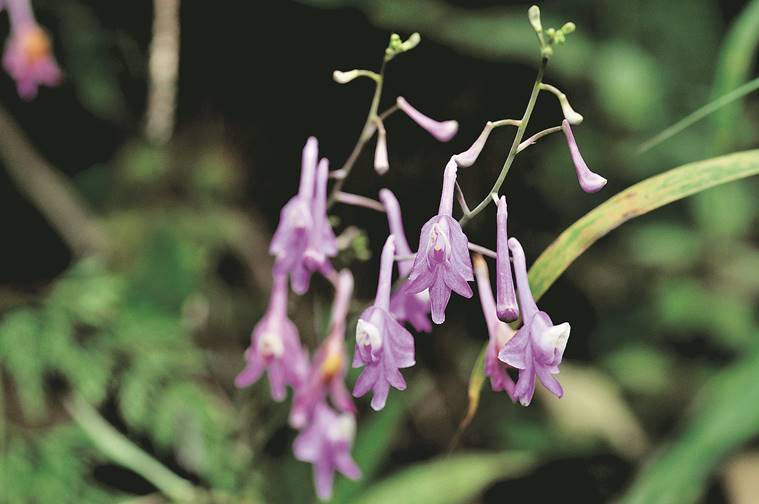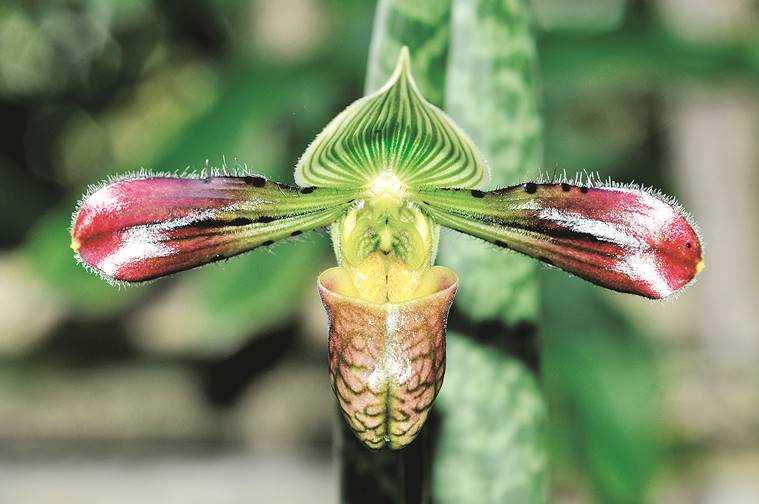
In January 2003, two days before Bohag Bihu, Khyanjeet Gogoi, trekking in the forests bordering Dibru Saikhowa National Park, was picked up by the United Liberated Front of Assam (ULFA) — at the time the most dreaded militant outfit of the Northeast. Held hostage in a secret “jungle” camp on the Assam-Arunachal Pradesh border, the militants interrogated Khyanjeet: “Why are you here? What are you looking for?” “Orchids,” the 23-year-old replied. It was an answer no one expected. Three days later, the slightly bemused ULFA cadres left Khyanjeet on the banks of a river; he was free to make his way home.
He was looking for a rare species of orchid at the park. Needless to say, those orchids were never found, but the quest continued. Since 1994, he has been travelling only in search of orchids. Over the years, he has recorded 395 species in Assam alone, discovered 35 new ones, named three himself and cultivated several more in his backyard in the small town of Rupai in Upper Assam’s Doomdooma, where he teaches biology at a local high school.

Today, he has many monikers in Assam: the orchid expert, the orchid whisperer, the orchid man, and is often called by the government to identify rare species. In Assam, the kopou phool, or the foxtail orchid, the pinkish-white flower that blooms in April and resembles a fox’s tail, was accorded the status of state flower in 2003. It has been, since time immemorial, linked to Assamese culture (as a symbol of fertility, merriment, love and affection) and is most conspicuous during Magh Bihu (the festival that heralds spring in Assam) — not just on trees, but also neatly tied to the head of a Bihu dancer.
“For the longest time, I didn’t even know they were called orchids. As a child, I would recognise them as kopou phool,” says Khyanjeet, who first saw these flowers not adorning a Bihu dancer’s head, but lying by the side of the road. “After using them, people would just throw these flowers away, and I — attracted by their appearance — would often collect them,” he says. He remembers, how as a student of botany in Sivasagar, he found no books on the subject in his college library, save for one chapter in one text book. “That is when I decided I should write to a book on orchids in Assam,” he recalls. In 2010, he published the Wild Orchids of Assam. To date, it’s arguably the only full-length book in English on Assam orchids.

In India, there are 1331 species of orchids, found in the Eastern Himalayas including Northeast region, Western Ghats, and eastern part of western Himalayas. “But the Northeast remains an orchid hotspot (all the seven states) with 72 per cent of total orchids found in India,” says Khyanjeet. However, simultaneously, as these flowers bloom, they are fast wilting and disappearing too. The reasons are many: deforestation, soil erosion, over grazing. While some traders do have proper trade licenses, majority of orchid trade, which is in part with China, is illegal. In 2015, Assam inaugurated the three-hectare Kaziranga National Orchid and Biodiversity Park belonging to Akhil Gogoi’s Krishak Mukti Sangram Samiti, which was promoted as a space for conservation. Today, it has 500 varieties of wild orchids, and is a tourist attraction.
A life member of Orchid Society of India, and the founder member of the Orchid Society of Eastern Himalayas, Khyanjeet met 26-year-old Ankur Gogoi at a youth festival in 2015. A dhul player of a local Bihu band in his hometown at Tengapukhuri, Ankur recounts, “Right before one of our performances, we realised we didn’t have any orchids for the girl dancers to put in their hair. But luckily, we came across someone who was cultivating close to 100 orchids in their home.” That made him think — “If they can, why can’t I? In 2010, I started getting orchids home — with the little knowledge I had, I began growing them. I would tie them up to the big mango and betel nut trees in my yard with a string. Soon I had twenty varieties.”

Khyanjeet taught Ankur how to culture the flowers, how to propagate them, and make more seedlings. For example, it wasn’t enough to just “bring orchids home”. “Orchids thrive only in certain climate — yes, they are easy to cultivate, but they are as easy to kill too,” Ankur was told. Through social media, in 2017, Ankur connected to other orchid lovers in Assam, from Dhemaji, Lakhimpur, Golaghat, and Tinsukia. “These were teachers, businessmen, students, tea planters,” says Ankur.
A social app called the ‘Orchid Group of Assam’ now has 53 members. They formed The Orchid Society of Assam, now a formally registered society, with the singular aim of conservation of orchid species in the state. “The kopou phool is the state flower. If we can protect the rhino, our state animal, why can’t we protect the kopou phool too?” says Mithu Gogi, a tea planter who is a member of the group and has about 7,000 kopou phools growing in his backyard.
“But it is an expensive proposition,” he admits. There are no government funds for its conservation. “We spend our own money only because we love it,” says Ankur.